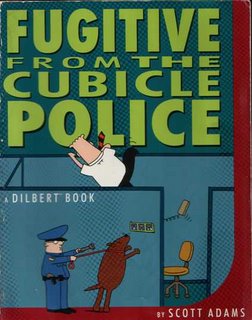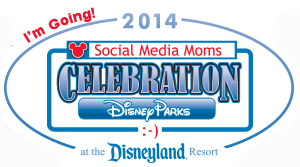Hi everyone, it’s a new month, and so it’s time again for the Blog Exchange. Please welcome this month’s guest blogger, Binky! You can find me over at her site today, and there’s more info about this exchange at the bottom of this post.
***************
According to the American Psychiatric Association (APA), “the debate is over.” Violence in the media DOES influence the behavior of children.
I’ll go along with that.
But the media will not raise my child.
Our culture is obsessed with the extreme, from violence to sex to eating habits and back again. We are bombarded every day by images designed to sell, convince, connive, and divert. When approached out of context, the omnipresence of these messages can seem overwhelming. Children, especially, are vulnerable to these altered depictions of reality as they work to conceptualize their own new world. Parents need to know better. They need to analyze and advocate. They need to teach. It is up to the family to build a framework of decency that supports its children and reinforces the innate importance of integrity.
Nor will the government raise my child.
My husband and I brought our daughter into this world willingly and with excitement because we believe that this is the time, and this is the place. The United States is anchored in its Constitution and in the solidity of those who protect it. It’s a country built on freedoms that place power in the hand of individuals and families. It is up to the citizens to decide what is best for the children.
Many studies, according to the APA, have shown that “exposure to depictions of violence causes desensitization and creates a climate of fear.” I believe this. I see this. But, to me, the clearest and most present danger is that of censorship.
I do not believe in government-mandated or -coerced “parental advisory” labels or ratings systems, V-Chips, or regulations dictating broadcast programming content and scheduling. Such guidelines can start out innocuously enough, but the force with which the heavy hand of the government comes down on our collective backside is likely to increase as our kids prove more stubborn than crotchety Uncle Sam can tolerate.
Exorbitant FCC fines already stifle indefinably “indecent” material on the radio and television. Bleeps pepper television movie broadcasts to an extent that would be hilarious if it wasn’t so damn insidious. More and more, we are losing options. Decisions about what is right for our children can no longer be made on our own terms.
I will raise my child.
I do not want my adult children to be denied freedoms because of what the government decided their youthful brains couldn’t handle. The true “climate of fear” is one in which views cannot be expressed and voices are not heard. It is our right as United States citizens and our obligation as human beings to stand up and speak up for the well-being of our children.
We must protect them from violence. And we must be allowed to do so freely.
American Medical Association (AMA) recommendations for limiting the media’s effect on children:
1. Be alert to the shows your children see. These suggestions are important for all
children, and most important for young children: the younger the child, the more
impressionable he or she is.
2. Avoid using television, videos, or video games as a babysitter. It might be convenient for busy parents, but it can begin a pattern of always turning to media for entertainment or diversion. Simply turning the sets off is not nearly as effective as planning some other fun activity with the family.
3. Limit the use of media. Television use must be limited to no more than one or two quality hours per day. Set situation limits, too: no television or video games before school, during daytime hours, during meals, or before homework is done.
4. Keep television and video player machines out of your children’s bedrooms. Putting them there encourages more viewing and diminishes your ability to monitor their use.
5. Turn the television off during mealtimes. Use this time to catch up and connect with one another.
6. Turn television on only when there is something specific you have decided is worth watching. Don’t turn the TV on “to see if there’s something on.” Decide in advance if a program is worth viewing. Identify high-quality programs, using evaluations of programs in your selection process.
7. Don’t make the TV the focal point of the house. Avoid placing the television in the most prominent location in your home. Families watch less television or play fewer videos if the sets are not literally at the center of their lives.
8. Watch what your children are watching. This will allow you to know what they’re viewing and will give you an opportunity to discuss it with them. Be active: talk and make connections with your children while the program is on.
9. Be especially careful of viewing just before bedtime. Emotion-invoking images may linger and intrude into sleep.
10. Learn about movies that are playing and the videos available for rental or purchase. Be explicit with children about your guidelines for appropriate movie viewing and review proposed movie choices in advance.
11. Become “media literate.” This means learning how to evaluate media offerings critically. First learn yourself and then teach your children. Learn about advertising and teach your children about its influences on the media they use.
12. Limit your own television viewing. Set a good example by your moderation and discrimination in viewing. Be careful when children are around and may observe material from “your” program.
13. Let your voice be heard. We all need to raise our voices so that they are heard by program decision makers and sponsors. We need to insist on better programming for our children.
– Binky of 24/7 is the mother of a 14 month old daughter she affectionately refers to as The Boss. To keep her toddler’s brain free from smut and violence, Binky listens to the Howard Stern Show on earphones and watches the Sopranos once the Boss is tucked safely in her crib. She is a rabid advocate of her daughter’s right to free speech, which right now is exercised with much passion in the form of “look,” “dog,” “thank you,” “hat,” and “gak.”
***************
This month we’re doing a series of debates on issues that matter. Click here for the other op ed pieces (and their opposing sides) today. And if you’d like to participate next month, send an email to kmei26 at yahoo.com.



















